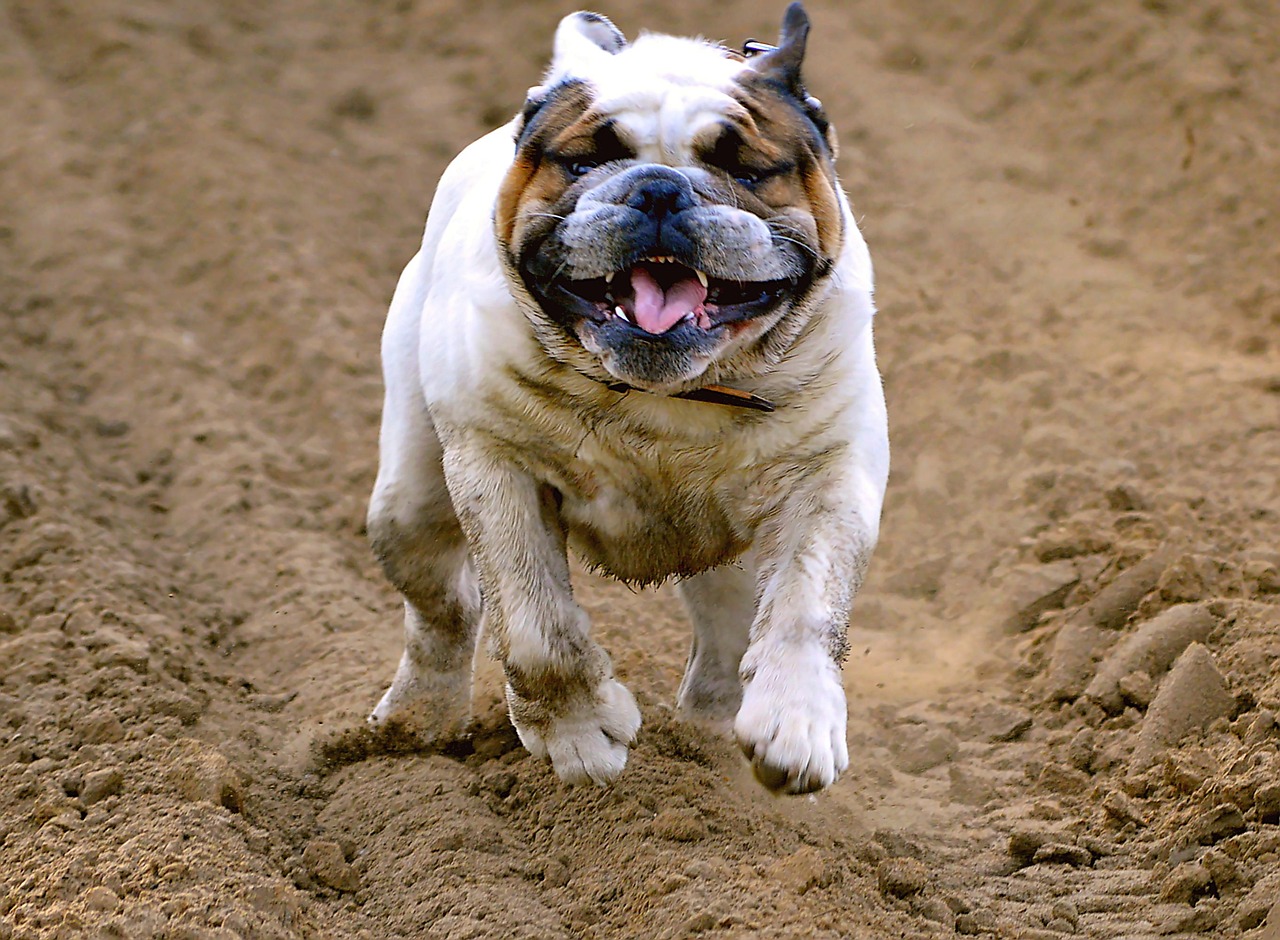In the delightful world of dogs, along with the cute and agile ones, there also exists a fascinatingly different type – the extremely clumsy and awkward breeds. These dogs, often endearing due to their lack of coordination, bring laughter and joy with their strange antics. Whether it’s due to their size, shape or simply a quirky personality trait, these breeds have a special way of wagging and babbling that is irresistibly adorable. They remind us that perfection is overrated and there is a unique beauty in being a little weird. Let’s explore twelve dog breeds known for their lovable clumsiness, and find out why their awkwardness only increases their appeal.
1. Basset Hound
Basset Hounds, with their long ears and short legs, are the epitome of adorable clumsiness. Their unique body structure, featuring a heavy, long body on stubby legs, naturally predisposes them to somewhat awkward gaits. It is a delightful sight to see a Basset Hound running with ears flapping and almost comical seriousness. His slow, languid gait coupled with his curious and often aloof demeanor makes his clumsy moments truly charming and heartwarming.
2. Bullmastiff
Bullmastiffs are large, powerful dogs, and their size often causes extremely awkward moments. Despite their strength and protective nature, Bullmastiffs can be quite gentle giants. Despite their large size, or their awkward way of stretching out on the floor, their attempts to be a lap dog often result in cute and clumsy scenes. Their vast majority, coupled with their surprisingly gentle and affectionate natures, creates a delightful contrast that is both amusing and lovable.
3. Saint Bernard
Saint Bernards are known for their huge size and rescue abilities, but they also tend to be extremely clumsy, especially as puppies. Their rapid growth often means they are not fully aware of their size, leading to awkward encounters with furniture or their human friends. Watching a Saint Bernard puppy try to keep up with his big paws can be a source of endless entertainment. Even as adults, their size and gentle, slow-moving nature often results in cute awkward moments.
4. Great Dane
Great Danes, known as gentle giants, are often unaware of their immense size. This lack of size-awareness leads to many ridiculous situations, such as trying to fit into small spaces or attempting to become a lap dog. Their long limbs can also be a source of clumsiness, especially in their puppy and adolescent stages as they grow into their larger bodies.
5. Boxer
Boxers are energetic and playful, and their enthusiasm often outweighs their coordination. This breed is known for its funny, high-energy antics, combined with a joyful disregard for grace. Their playful jumps and runs are often coupled with a lack of finesse, making their actions extremely awkward and a joy to watch.
6. Dachshund
Dachshunds, with their long bodies and short legs, are naturally a little awkward. Their unique shape makes them especially funny when they run or try to jump obstacles. Despite his physical limitations, his honest efforts are both amusing and admirable, reflecting his determined, yet clumsy nature.
7. English Bulldog
English Bulldogs are renowned for their stocky bodies and distinctive wrinkled faces. Their short, strong legs and wide bodies make their movements somewhat awkward. Watching English Bulldogs playing or simply walking can be a source of amusement due to their sloppy gait and often serious expressions, which contrast humorously with their awkward antics.
8. Pug
Pugs are small but full of character, and their physical characteristics lead to awkward, comical moments. Their expressive, bulging eyes and flat faces, combined with their stocky bodies, result in a distinctive, sometimes awkward appearance. The way Pugs walk and play is often charmingly elegant, which combined with their playful and loving nature makes their clumsiness all the more endearing.
9. Newfoundland
Newfoundland dogs are huge and powerful, yet they are also known for their sweet, gentle nature, which often turns into adorable clumsiness. Their large size can make them awkward in small spaces, and their love of water can lead to amusingly awkward swimming attempts. Despite their imposing stature, the Newfoundland often has a soft, almost shy approach to their surroundings, which adds to their clumsy charm.
10. Bloodhound
Known for their incredible sense of smell, Bloodhounds are often single-minded in their search for a scent. This attention span can lead them into awkward situations, as they may not pay attention to their surroundings. Their long ears and droopy skin add to their ungainly appearance, especially when they are in full tracking mode, with their noses pressed to the ground and their ears dragging.
11. Old English Sheepdog
The Old English Sheepdog, with its shaggy coat and sloppy gait, often seems to symbolize furry clumsiness. Their fur can cover their eyes, further adding to their lost and mumbling demeanor. Watching an Old English Sheepdog attempt to navigate by means of its hair can be both hilarious and adorable.
12. Shar Pei
The Shar Pei is unique because of its deep wrinkles and serious expression. The layers of their skin can sometimes obstruct their vision, leading to extremely awkward moments as they try to figure out what’s in front of them. Despite their dignified and calm appearance, the Shar Pei can be surprisingly clumsy, often in the most charming and gentle way.
These twelve breeds, each with their own unique characteristics, bring a special kind of joy with their adorable clumsy and strange ways. From the gentle lumbering of the Saint Bernard to the serious efforts of the Dachshund, these dogs remind us that there is an incredible charm in imperfection. Their awkward moments are a source of not only laughter but also love, as they highlight the joyful and genuine nature of our canine companions.

